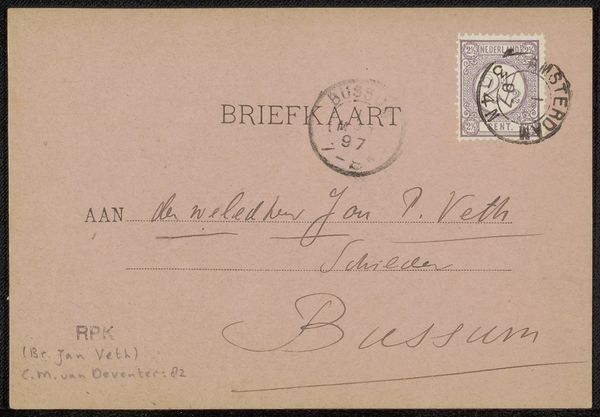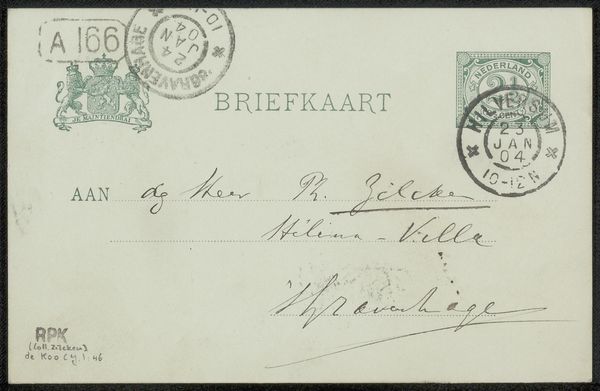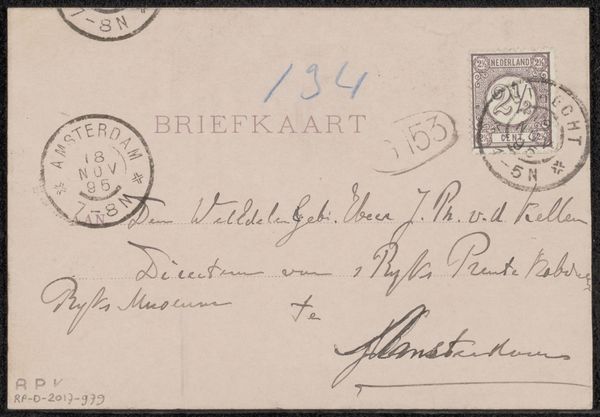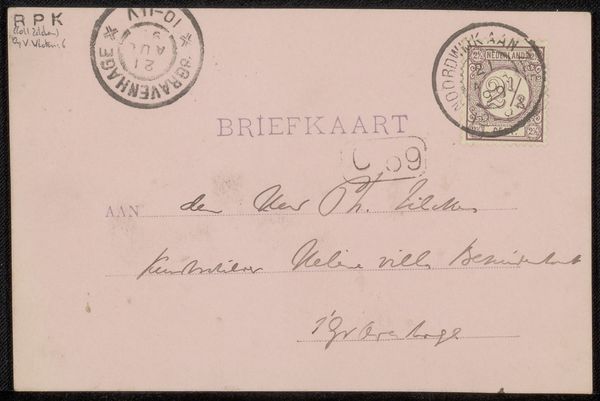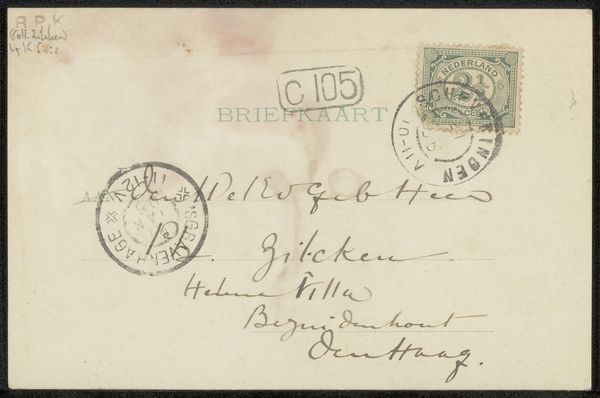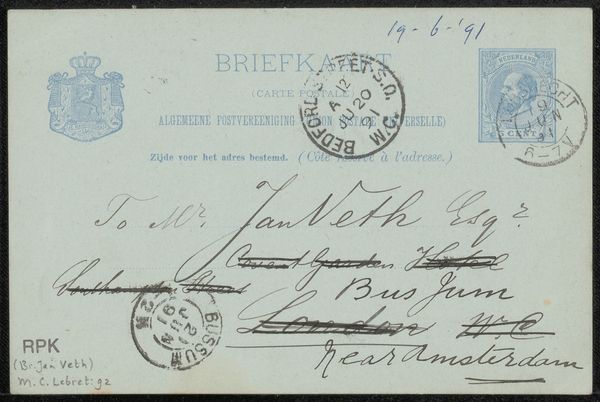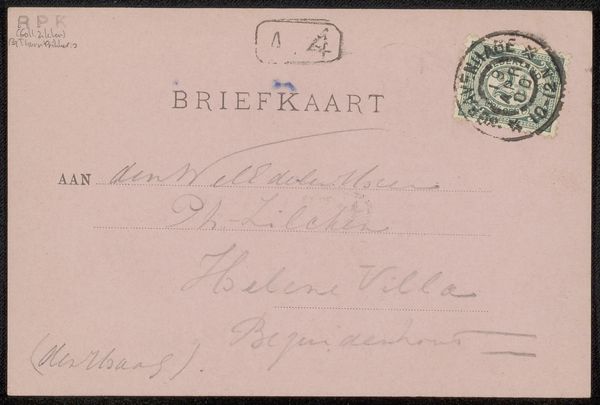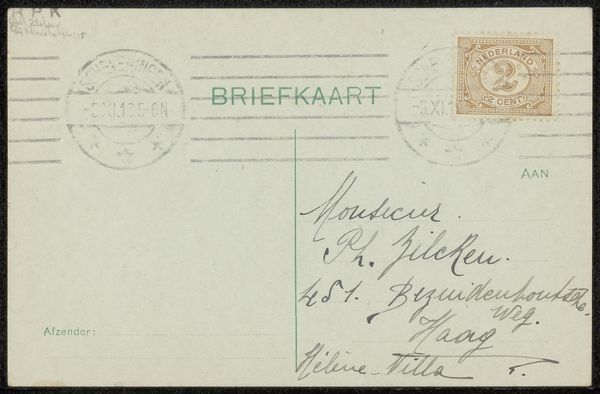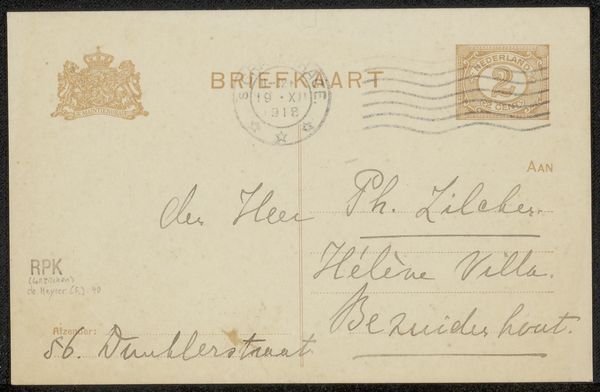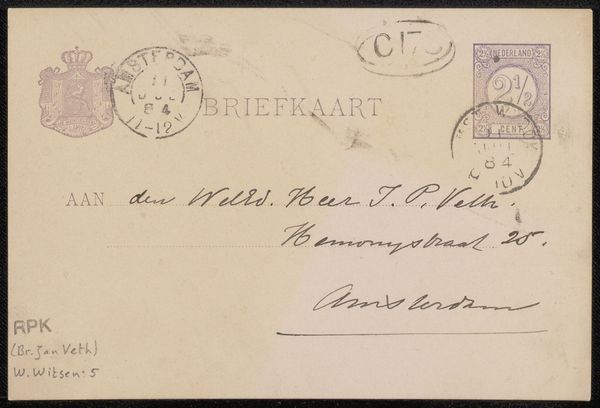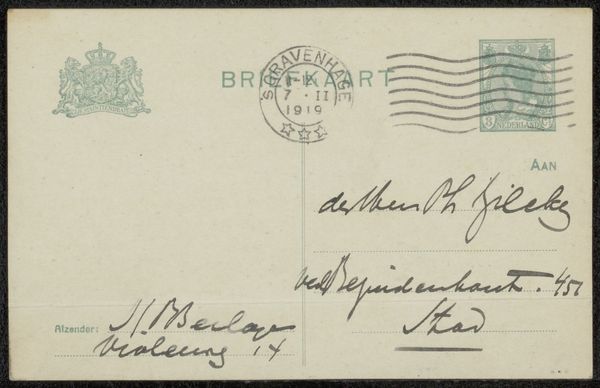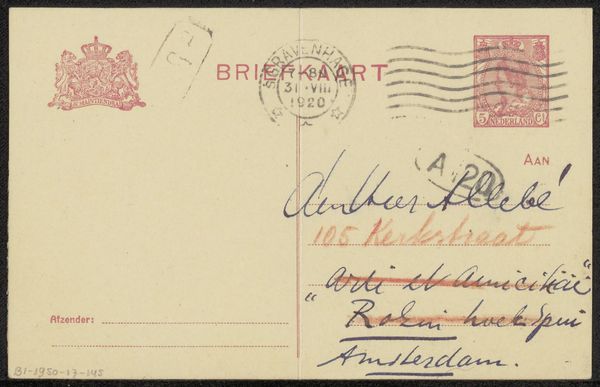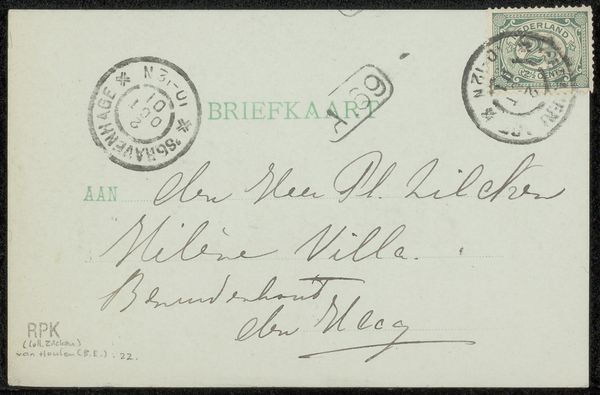
print, paper, photography
#
portrait
# print
#
paper
#
photography
Copyright: Rijks Museum: Open Domain
Editor: Here we have Louis van Soest's "Briefkaart aan Philip Zilcken," dating roughly between 1901 and 1912. It's a printed postcard, so paper and photographic elements come into play. I'm struck by the material evidence of its journey – the stamps, the postmarks, the handwritten address. What do you see in this piece beyond just its simple function as a communication? Curator: For me, this postcard is deeply rooted in its materiality and the system that allowed it to exist. Look at the layers: the industrial printing process making mass communication accessible, the state-controlled postal service facilitating distribution, even the ink used for the handwriting becomes significant. The materiality speaks volumes about early 20th-century infrastructure. Consider the sender; were they wealthy enough to casually send correspondence or reliant on cheaper means? How might the quality of paper speak to the status of the communicators? Editor: That's a really interesting point. I hadn't considered the socio-economic implications embedded within the card's very being. Does the act of sending a ‘briefkaart’ itself hold significance considering its mass-produced nature? Curator: Exactly. A briefkaart speaks of both utility and a growing democratization of communication. Before these affordable means, correspondence was a more formal and expensive endeavor. Now, who got to participate in artistic circles? Was the easy means of contact expanding accessibility for artists or simply greasing the wheels of an already established system? Also note the handwriting - who gets remembered for their handwriting? Consider handwriting as an antiquated craft which denoted both class and skills. Editor: I see that in viewing the simple form of this "Briefkaart" as it is allows us to delve deeper into the materiality of its manufacture, and consider the way in which it has been circulated as crucial evidence of history. Curator: Indeed. This humble object offers a window into the economic and social context of art and communication at the turn of the century.
Comments
No comments
Be the first to comment and join the conversation on the ultimate creative platform.
